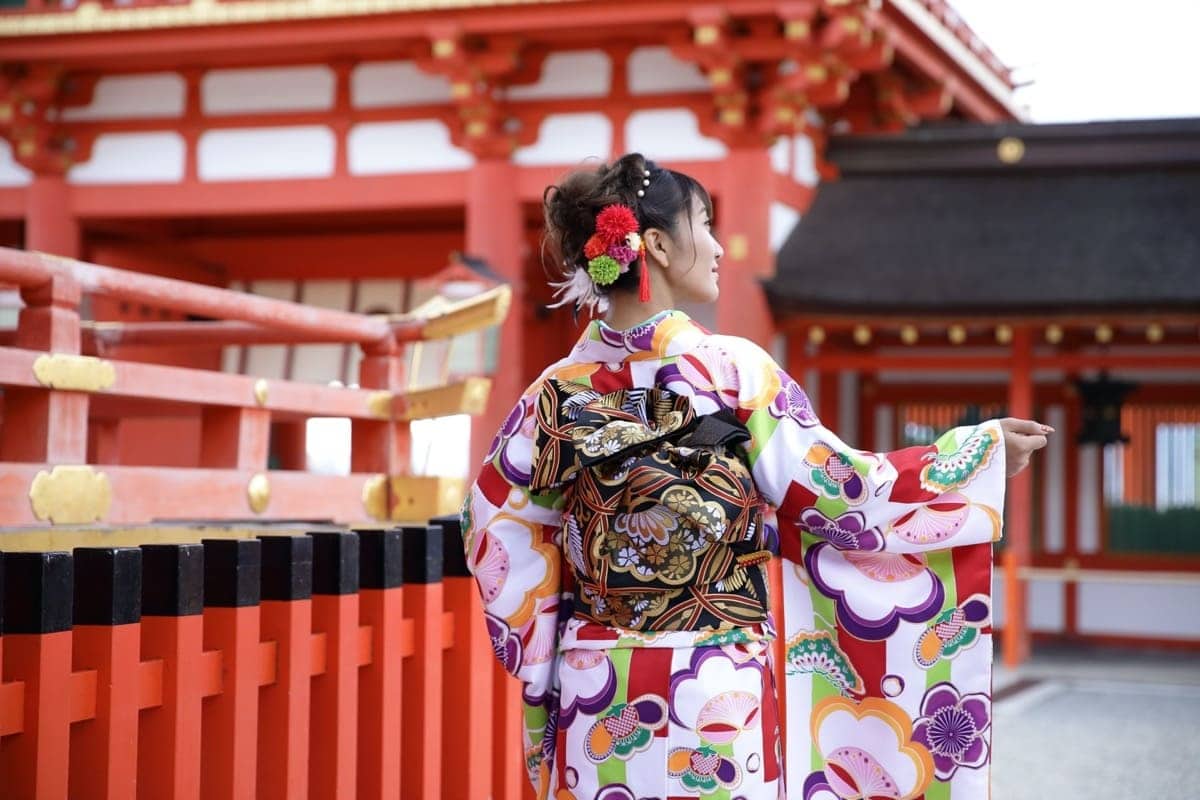
The kimono is the traditional japan clothing with very particular manufacturing characteristics and which is part of the tradition of oriental culture. It is a garment that has undergone some changes throughout history, mainly due to the influence of Chinese culture and other events, and currently it is only used on special occasions, since most Japanese wear European clothing.
If you wonder "What is a kimono?" In this article you will find answers to many of your concerns as we will discuss different aspects of this ancient garment: from its characteristics to its history and types of kimonos.
What is a kimono?
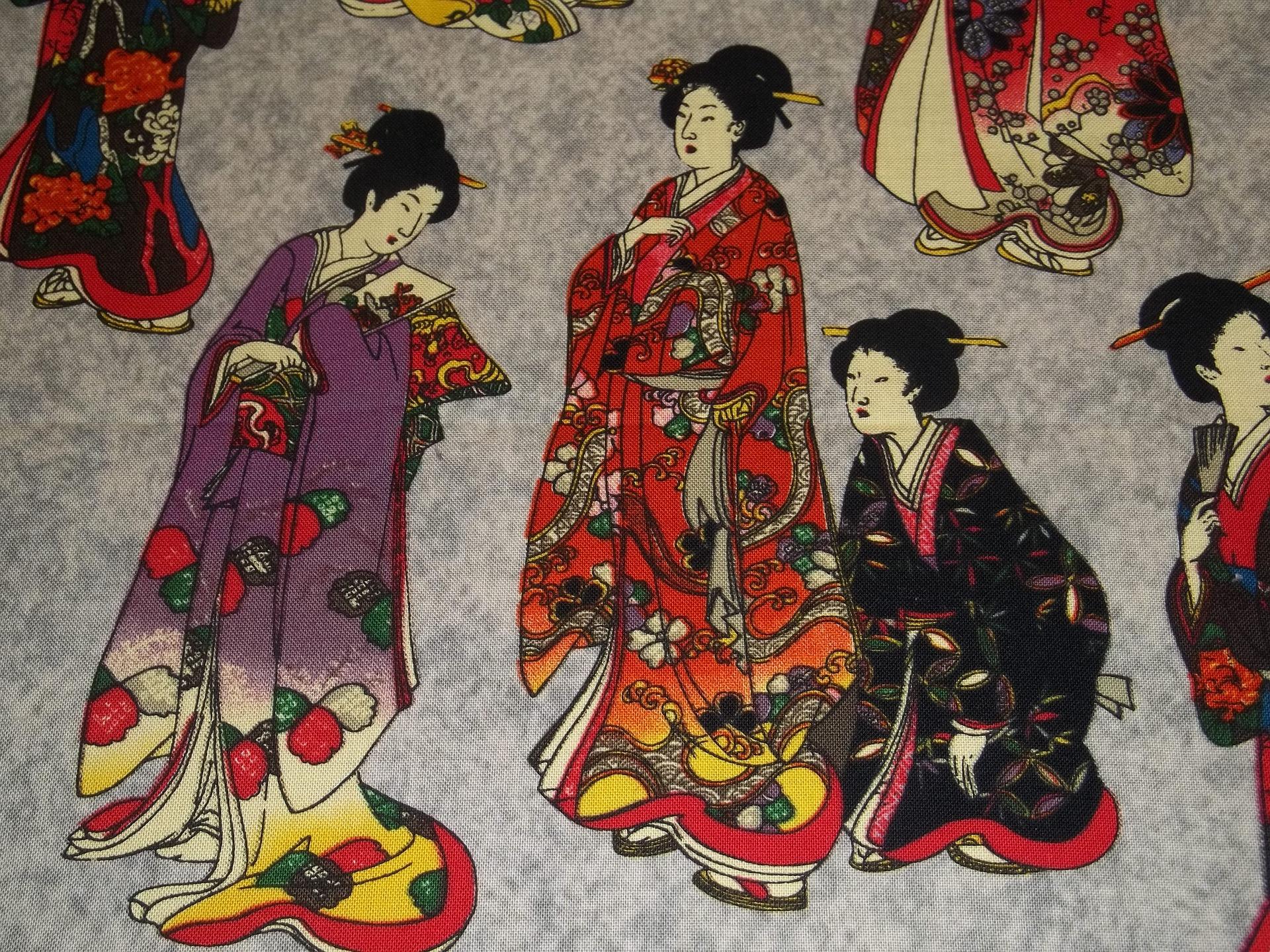
The kimono or kimono is traditional japanese clothing and the national dress of Japan. The word kimono derives from the verb "“ki” (Abbreviation of Kiru) which means "to wear or wear" and the noun "bow" which is "thing". So literally, "kimono" means "thing or object to wear or wear" or as we understand it in the West, clothing.
The kimono is a garment with a very particular clothing. They are long garments that reach the shin (a little before the feet) and that wrap the body in T shape. Its cut is rectangular and it has wide square sleeves. Wrapping direction is normally left over right. It will be executed in the opposite way only if the user is deceased. The wrap results in a V neckline called "auntie" and so that the garment remains attached, a wide girdle called obi.
Like any article of clothing, the kimono is accompanied by different accessories. They are traditionally used sandals zōri (low leather and cotton sandals) or geta (classic wooden sandals and high flat platform) with Socks tabi (traditional socks that separate the thumb from the rest of the toes thus allowing the sandal to be fitted by anchoring between said phalanges).
There are different types of kimono for all types of users and occasions. It is worn by women, men and children, and its clothing and colors are adjusted according to gender, age, marital status, type of ceremony and time of year.
Originally the kimono was made with rustic materials, but the influence of Chinese culture introduced the sound, making the kimono a sophisticated and luxurious garment.
Currently most of the Japanese dress in Western clothing. but on special occasions (weddings, tea or other ceremonies and national holidays) the tradition of wearing a kimono is still preserved.
There is a movement of kimono fans that promote its use, either for personal taste or for the claim of this ancient culture. Organizations have been founded with personnel trained in this tradition that offer classes to their users so that they learn to put on the kimono and use it correctly according to the occasion. These trainings include behavior training required to wear this garment and a correct choice of accessories and underwear. Wearing a kimono is much more than wearing a garment, you have to know how to do it, preserving the ancestral rituals based on discretion and elegance. As an example of these kimono cult movements we can mention the club Ginza, but there are many more.
Brief history of the kimono
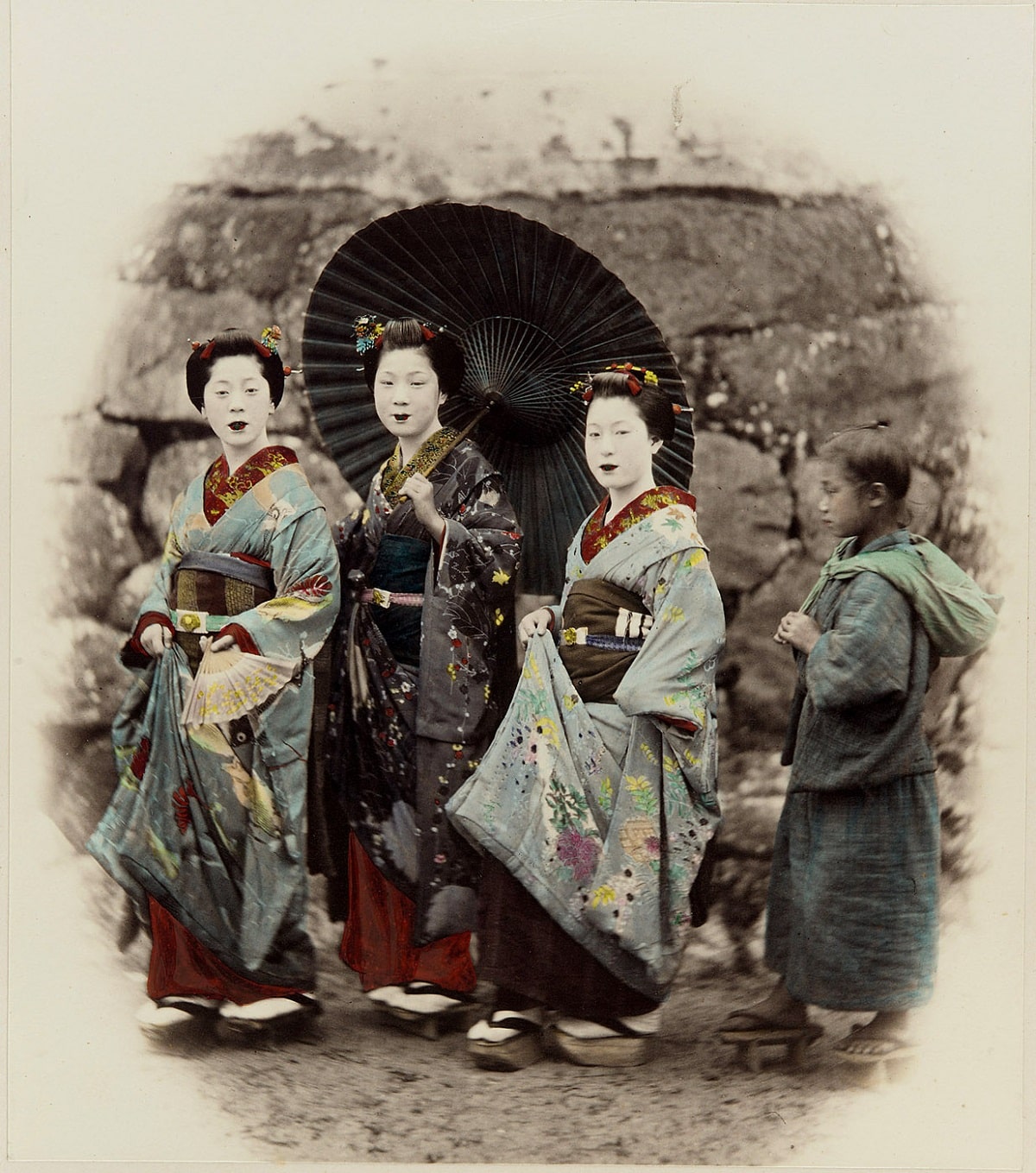
The kimono is a garment that has received from its origin a great influence of chinese culture. His original name was gofuku, due to the strong influence that the first kimonos received from traditional Han Chinese clothing, currently known as hanfu. During the Nara period the Japanese adopted the roar Chinese that was adopting different transformations until reaching the current kimono.
At Heian period, kimonos became highly stylized garments, although a special type known as Mo continued to retain its original shape.
During the Muromachi period, Kosode – a type of one-piece kimono worn as undergarment – began to be worn without pants hakama above, going on to wear these kimonos held by a obi. Since then, the basic form of the kimono has remained essentially unchanged.
Over time, the formal kimono was replaced by European clothing and only the yukata for daily use in those who voluntarily decide to do so.
It seems that after the great kantō earthquake, people dressed in Kimonos were frequently victims of robberies and The Tokyo Women's and Children's Clothing Manufacturers Association promoted the use of European clothing, which planted the origin of the decline of this custom. The 1932 fire at the Nihonbashi store in Shirokiya is also said to have been the catalyst for the decline in the use of kimonos as everyday clothing (although it is noted that this may be an urban myth).
Currently, kimonos made with traditional techniques and quality materials such as silk are considered great works of art and lead movements of kimono cult as well as an industry around it. To this day, Orientals usually wear clothing of European origin and yukata It is only used on special occasions.
Uses of the kimono
As we said a few lines ago, this garment has different characteristics depending on the use that it is going to be given. It will depend on the type of ceremony, the sex and the age of the person.
There are important differences between women's and men's kimonos. Although the former tend to be more elaborate, loaded with beads and more diverse and versatile, the latter are characterized by being quite simple clothing and made of a different fabric.
They are used for special ceremonies -such as the tea ceremony-, national holidays, weddings, funerals, special visits, for daily use and for sleeping.
Kimono use in women

For women there are many types of kimonos adjusting to age and marital status and occasion. The single girls they have their appropriate kimono to attend weddings or graduations (furisode), the married women or engaged will use the kurotomesode and Brides They will use as a wedding dress the uchikake (of the most luxurious kimonos made with the best silk) or shiromuku (of fine elaboration and white).
For funeral women will wear a black kimono (Mofuku), for daily use the com and for the tea ceremony, edo komon. In visits or parties They will wear a semi-informal kimono, the homongi. And finally the yukata, a kimono made of cotton of which there are two versions: a more elaborate one, used for festivals, and a simpler one (nemaki)), which is used for sleeping.
There are many more types of women's kimonos. Here we have only named some of the most representative.
Use of the kimono in men
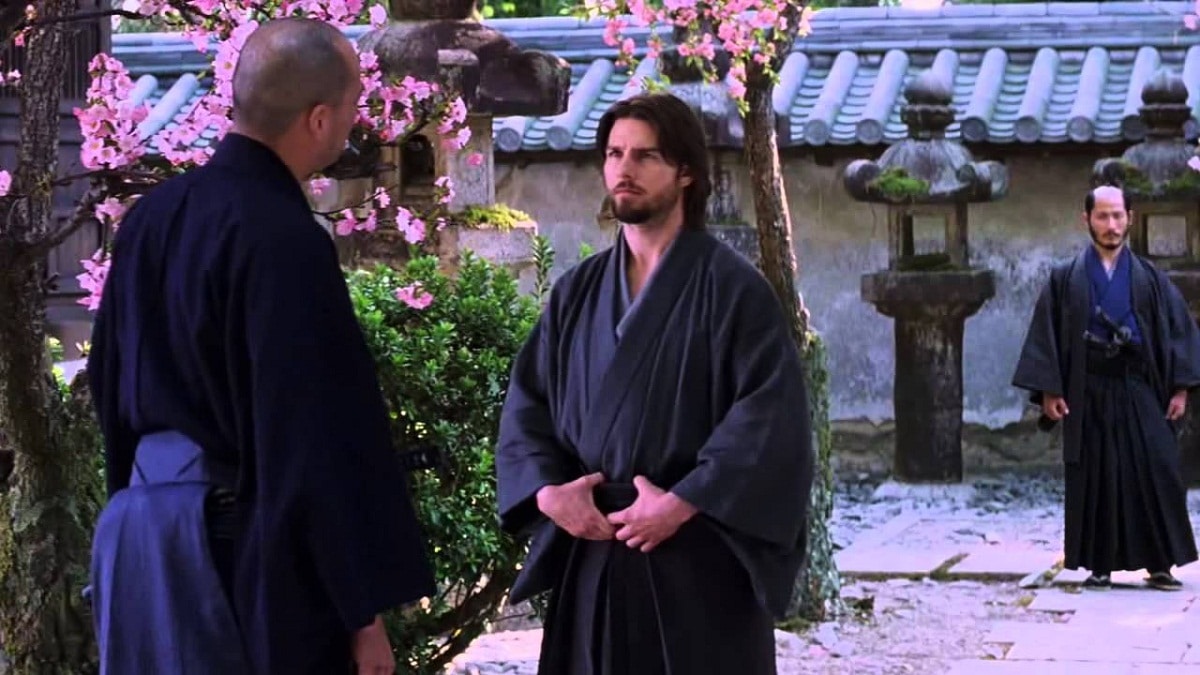
As usual in men's fashion, kimonos for men are more sober and simpler to make. In addition, the fabric with which they are made is different from that of women's kimonos, they are matte and dark fabrics. The sleeves of the male kimono are attached to the body by only a few centimeters independent at the bottom and are shorter than the female ones to accommodate the obi under them.
Like women's kimonos, there are different types depending on the use that is going to be given. The most widespread is yukata, very breathable cotton kimono used for informal occasions and in summer for your comfort. It can also be combined with a jacket. Then we have the more formal kimono made with black silk for special occasions. The sumo wrestlers They wear brightly colored kimonos such as fuchsia and martial arts fighters el hakama.
Conservation
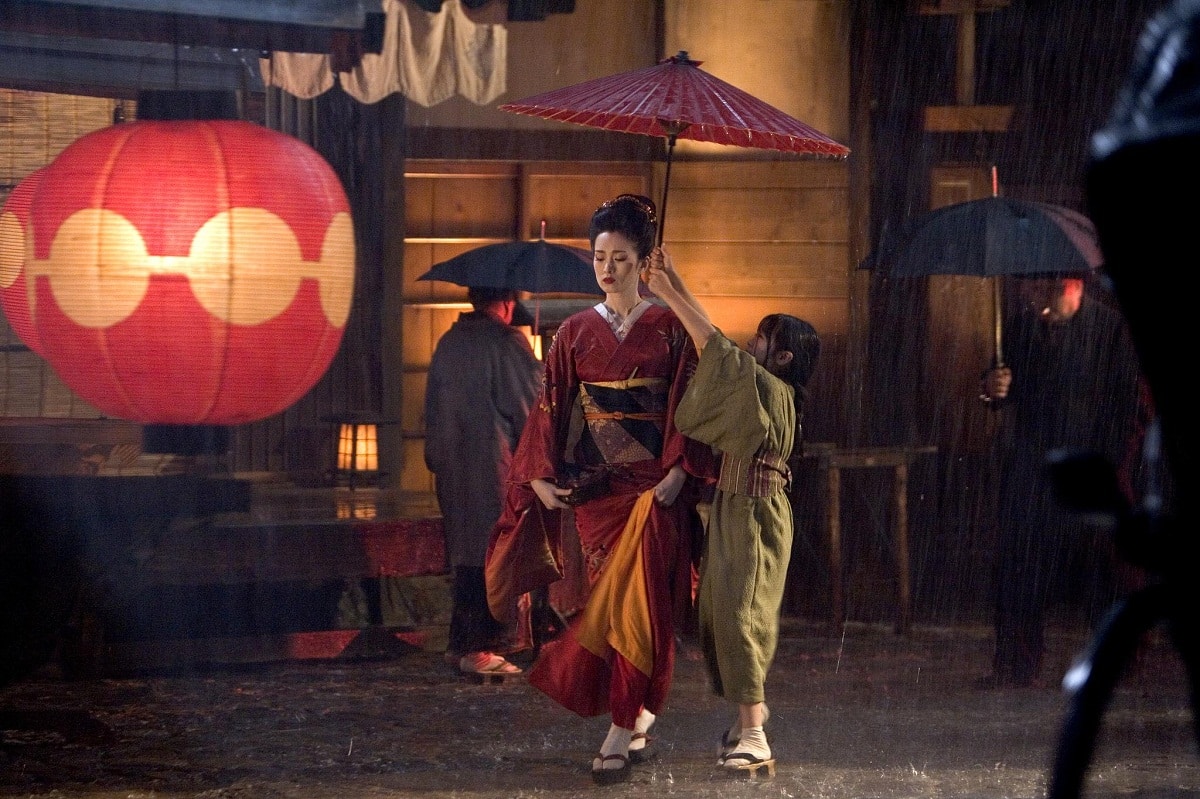
Traditional kimonos are closed on the body of the person through handmade seams and to take off it is necessary to undo those seams. Dressing a kimono is therefore a complex task. In the past, these customs were maintained as part of the ritual of the kimono ceremony. But today it has been replaced by easier methods, although the tradition of hand-sewing is still preserved in schools of kimono worship.
Formerly, in Japanese culture the kimono treatment to be washed supposes a ritual that has its own name: arai hari. This is an expensive process in which The stitches of the kimono are removed one by one by hand and then washed separately without mixing with other garments.
Today, more modern fabrics and implemented cleaning methods eliminate this laborious process, although traditional kimono washing is still practiced, especially for high-priced kimonos.
Kimonos today can be found in different types of fabric (silk, cotton and synthetic fabrics) and Depending on its composition, the washing process will be different cotton and synthetic kimonos are the easiest to wash, being able to use a conventional washing machine. It is important not to mix the kimono with other clothing, or use dryers or washing programs at high temperatures. If washing by hand, vigorous rubbing is not recommended. The wool kimono should be taken to the dry cleaner. And to iron the kimono we can use a fabric in between, it is not recommended to do it directly on the fabric.
Like other traditional Japanese garments, kimonos have specific ways to be stored that use specific folding steps that help preserve them by preventing them from wrinkling. They are commonly wrapped in a paper called tatōshi.
And finally note that the kimono must be previously aired before being used.
From postposmo We hope we have made you enjoy this fascinating journey through the Japanese culture through the knowledge of what a kimono is, the quintessential garment of oriental culture.